Buy or gift a stand-alone digital subscription and get unlimited access to dozens of back issues for just £18.99 / $18.99 a year.
Please register at www.exacteditions.com/digital/cornucopia with your subscriber account number or contact subscriptions@cornucopia.net
Buy a digital subscription Go to the Digital EditionBodrum’s peace was shattered in 1856 by the arrival of a warship bearing one of the most ambitious archaeological expeditions Britain has ever launched. Leading it was Charles Newton. His mission was to locate, excavate and carry home one of the Seven Wonders of the Ancient World
On the morning of November 15, 1856, there was excitement in the normally sleepy town of Bodrum. HMS Gorgon, a steam-driven corvette of the Royal Navy, lay at anchor in the bay, almost in the shadow of the Castle of St Peter. It began to disembark great quantities of equipment. Carts laden with pickaxes, iron bars, huge coils of rope and chain, pulleys, hoists and blocks were being pulled up the beach.
This was the beginning of the archaeological expedition to Bodrum and Knidos (Cnidus), the most ambitious of the official British excavations in Asia Minor during the nineteenth century, and the longest – lasting two-and-a-half years. From the British Museum’s point of view, it was also the most successful, producing three shiploads of excavated material, among which are some of the museum’s greatest exhibits – the Knidos Lion, the colossal seated statues from Branchidae, and of course the sculpture from the Mausoleum of Halicarnassus itself.
This was possibly the first archaeological expedition to be recorded photographically from start to finish. Upwards of 200 photographs were taken by Corporals Spackman and McCartney of the Royal Engineers, using the collodion process, which required a portable dark chamber. This was more difficult to manage than the more common waxed-paper method, but produced sharper, more brilliant images.
The expedition was led by Charles Newton, then forty years old, who would later become Sir Charles Newton, keeper of Greek and Roman antiquities at the British Museum. In photographs he appears a short, slight, retiring and effete figure, rather incongruous among the tough sailors and the semi-military equipment of the expedition. In reality he was anything but retiring and effete. He was ruthless in the pursuit of his goal and as adept at dealing with the Foreign Secretary in London as with the proprietors of the houses in Bodrum inconveniently placed in the way of his intended excavations.
Newton had entered the British Museum in 1840 as an assistant in the Antiquities Department (antiquities, classical, oriental and medieval, as well as ethnographical objects, were at the time in one department). In 1852 he left the museum to become vice-consul at Mytilene, with the object of exploring the coasts and islands of Asia Minor. Unofficially he was the British Museum’s scout in the east Aegean, actively pursuing antiquities to send back to London.
With funds supplied by Lord Stratford de Redcliffe, then British ambassador at Constantinople, in 1852 and 1855 he made important discoveries on the island of Kalymnos. However, excavations on a more ambitious scale in Bodrum and Knidos had been in his mind for some time. Well-connected and persuasive, on a visit to London in the summer of 1856 he had convinced Lord Clarendon, the British Foreign Secretary of the time and an enthusiastic antiquarian, of the potential benefits of an official expedition to these sites. In August Newton submitted a detailed paper to Clarendon identifying three principal benefits from the proposed expedition: “firstly to secure further sculpture from Bodrum Castle [thereby adding to the so-called ‘Canning Marbles’ at the British Museum, removed from the castle in 1848 at the instigation of Lord Stratford de Redcliffe, then Stratford Canning], secondly to identify and excavate the site of the Mausoleum of Bodrum, and thirdly to carry out excavations in Knidos”.
Newton had carried out some preliminary digging in Bodrum in the previous year, but was not yet certain of the Mausoleum’s exact location. Of Knidos he writes: “Considering the great celebrity of Knidos in Antiquity and the magnificence of the architectural remains which cover the site, there is great probability that fine sculpture and interesting inscriptions would be found under the mass of the super-incumbent ruins…”
For excavations there, “a ship of war would be absolutely necessary, for there is no village on the spot. Both food and water must therefore be imported…The masses of marbles that encumber the ground could only be cleared away by the application of strong tackle…which are only to be found on board a man of war”. Newton originally envisaged a six-month expedition, from mid-October to mid-April, at a total cost of £2,000. He believed it would be possible to spend less, but his experiences at Kalymnos had shown him that “the chances of success are diminished by conducting researches on too minute and economical a scale”. In reality, Knidos was to prove a more difficult site for excavations than Newton had anticipated.
The British Museum lent Newton its vital moral support. Anthony Panizzi, the Principal Librarian, wrote to Clarendon: “I hope your Lordship will give a favourable consideration to this proposal, from which I expect great results. Mr Newton is especially anxious that the prospect of removing the lions [from Bodrum Castle] is kept secret. He feels the French would be after them.”
Clarendon approved the project and its budget of £2,000 in the first week of September, and from then things proceeded with astonishing speed. By October the expedition had been assigned an engineer, sappers and miners – and, at the suggestion of Newton, a photographer. Three artists, including the twenty-one-year-old GF Watts, were to accompany the expedition. “I am particularly anxious that Watts should join the expedition,” Newton wrote. “I know of no modern artist who draws sculpture so well.” Sadly, no drawing by Watts from the expedition appears to have survived.
The admiralty, meanwhile, assigned HMS Gorgon to the expedition, and filled her hold with impressive quantities of rope, purchase blocks, spars for scaffolding, planking, tramways, tents, barrows and tools. Explosives were sent from Woolwich Arsenal. The stores list reads like that of a small military expedition.
It is fortunate that Newton persuaded the Foreign Office that the expedition required “a photographic apparatus of the best kind… the cost of such is from £75 to £100”. This was a large sum, but Newton successfully argued that the value of photography in providing an accurate record of the progress of expeditions was immense, and that the photographs might be useful to the navy. He writes: “It would be possible to make a series of most interesting views of the Carian promontory at the extremity of which Knidos stands, and of many ancient sites of cities…, following up and completing the scientific survey of the coast which the British Government has carried on for years by Hydrography.”
While the expedition was preparing for departure, the British ambassador in Istanbul, Lord Stratford de Redcliffe, now aged seventy and only months from retirement, made arrangements to extend an already existing firman to excavate and remove in Bodrum for another year. A separate firman was required to remove marble lions and friezes from the castle, and this was not granted until the following March. In a letter to Newton, Stratford de Redcliffe reminds him that his position regarding excavations at Knidos is still unclear: “The permission which I obtained for you last year from the Turkish Government to make excavations at Bodrum and its neighbourhood and to remove such objects out as you may have the fortune to discover is still in force, and the vizeral letters which I have now procured for you not only confirm that permission but extend it to the full period of a twelvemonth from the time of your breaking ground… Doubts may arise as to your being at liberty to include the ancient city of Knidos within your operations. There is reason, however, to presume that in directing your attention to so promising a site you have displayed your customary judgment… I am nevertheless of the opinion that you had better run the chance of being interrupted on the spot than prematurely raising a question which might detain you here and expose you to the evil influence of jealousy and mistrust. The objection of any local functionary might be removed without reference to superior authority… “It can hardly be necessary for me to remind you of the desire expressed in your vizeral letters that as often as any object of ancient art may be excavated in duplicate, one of the specimens should be set apart and placed at the disposal of the Turkish Government.”
And so, in mid-November, the expedition had arrived in Bodrum. Newton found accommodation at the konak of Salik Bey, the local agha, and, with a mixed party of sailors from Gorgon and hired Turkish day labourers, he began to dig.
As he had predicted, locating the site of the Mausoleum proved difficult. Although in the early fifteenth century its site had been discovered by the Knights of St John, and plundered for building materials for Bodrum Castle, by 1856 there was no visible trace of the monument, despite its size (Pliny describes the structure as about 45 metres in height). He started to dig, first near the castle, then near the theatre. There was no sign of the Mausoleum at either site.
However, in late December his luck changed. Perhaps on the advice of Lt Murdoch Smith of the Royal Engineers (which is not acknowledged in Newton’s shamelessly immodest account), he directed his workforce to dig a site almost in the garden of the konak where he was living. Here, in mid-January, the Mausoleum was located. Between then and June he discovered most of the sculpture now on display in the Bodrum room of the British Museum.
The first major find was the magnificent galloping horse and its rider, almost certainly from the quadriga on top of the Mausoleum, complete with its bronze harness. Newton was ecstatic. “The equestrian figure is of surpassing beauty,” he wrote to Stratford de Redcliffe. “I consider it the most remarkable specimen of colossal Greek sculpture I have ever seen…While in the manner of execution it rivals the pedimental sculptures of the Parthenon, it far surpasses them in mass.”
Next he found two large fragments of high relief of the battle between the Greeks and the Amazons, which ran in continuous relief round the whole building, “a slab of extraordinary beauty”. There were Amazons on horseback and another Amazon on foot “in extraordinary preservation” and “finished with the delicacy of a coin or cameo”. These pieces he considered to be “far superior in execution and condition to any part of the frieze now in the British Museum”.
A ten-foot female statue swathed in heavy drapery, possibly a portrait statue of Artemesia, builder of the Mausoleum, he describes as “the most valuable discovery which has been made on the site of the Mausoleum”.
In late April he reported the discovery of a “female head of colossal size”, adding that it was “the most beautiful I have ever seen except that of the Venus at Arles”. There was, however, a problem. The site was occupied by several houses and their gardens, whose owners held out for a high price. Some of these houses Newton purchased and demolished. Others he dug around and actively undermined. But some owners either refused to sell or asked sums he was not empowered to pay. Lord Clarendon’s letters from the Foreign Office show his keen interest and support: “Neglect nothing that will make your labours complete,” he writes in a letter of May 20, 1857. “You are authorised to purchase whatever houses you think might be desirable to remove in carrying out your operations.” Newton then raised his offer, but several owners simply refused to sell. An incident in March 1857 revealed Newton at his most ruthless. The firman authorising the removal of the lions from Bodrum Castle was finally issued in Constantinople. The commandant of the castle was aware that the firman had been granted and was en route, but was unwilling to surrender the lions. He had them removed and put on a caique for transport to Cos. When the firman arrived, the caique was still in Bodrum harbour and, with breathtaking arrogance, Newton had the lions removed and transferred to HMS Gorgon. In his published diary, Travels and Discoveries in the Levant (1861), he describes the incident with a great air of triumph.
By the standards of modern archaeology Newton’s technique was shockingly unscientific, but it was certainly fast and effective. A team of up to 100 pickmen cut trenches in the ground, supervised by sapppers. The spoil was sifted for marble fragments, which were collected. In fact the sculptures now in the British Museum were reassembled from dozens of fragments (the colossal male statue, possibly of Mausolus, was reconstructed from “upwards of fifty fragments”).
At the end of June Gorgon left with 218 cases on board. The magnificent horse, too large to fit in the hold, was strapped down to the deck. HMS Supply took her place in Bodrum, and Clarendon agreed to increase the expedition’s budget by a further £1,500.
In August Newton made a surprising error of judgment, for which he was reprimanded by his superiors. He gave permission to the navy to remove the entire northern wall of the Mausoleum’s peribulus, built of cut marble blocks, for the construction of a new dock in Malta. Panizzi was most displeased, and Newton received a curt, dictated note from Clarendon: “I am directed by the Earl of Clarendon to state to you that it would have been better not to remove the marble from Bodrum.”
Newton’s justification for his actions reveals his less likable side: “Had the site of the Mausoleum been discovered in a more civilised country I should have preferred to have left this last relic of the peribulus wall standing in situ, but the certainty that the wall would be broken up and applied to base uses by the natives immediately after our departure… has reconciled me to its removal for the public object I have stated.”
Excavations continued in Bodrum through the autumn, but the pace of discoveries slowed. In December Newton moved to a camp at Knidos, about twenty miles away, with a party of about ten people, including a photographer and six marine guards, since an attack by pirates was not impossible. Initially he was enchanted: “There is something very attractive in this place – the delicious freshness of the air, the beauty of the scenery, the stir and activity of our little colony in the midst of such loneliness and ruin, are a pleasant change after the monotony of our life for the last twelve months”. However, life proved to be unexpectedly harsh. His excavations, too, were more difficult and less productive than he had hoped.
The first month was occupied in putting up huts, which had been sent from the Crimean campaign but without their stoves. This was unfortunate, for “The winter since our arrival has been one of extraordinary severity, and from time to time a Crimean north wind sweeping with relentless fury over the naked promontory where we are encamped split the half inch of planking of our huts and penetrated the very marrow of our bones… I have sometimes felt tempted to take refuge in the tent where our little flock of sheep are folded to protect them.”
Newton’s plan was to employ men from the nearby village to cut away the brushwood encumbering the ruins, after which he would be able to decide on the best ground for excavation. “I think the principal object of the expedition should be determining the site of the Temple of Venus [Aphrodite] in which the celebrated statue by Praxitiles stood,” Newton wrote. But the Turkish workmen were initially hard to find, and he was unable to locate the temple. Diggings near the lower theatre produced no very spectacular finds. “The Hellenic remains are so overlaid by subsequent Roman structures that it is most difficult to select a promising site for excavation,” he wrote in February.
It was not until March that he made his first discoveries at Knidos – a tomb on the Tekir promontory so well hidden by brushwood that it still contained three sarcophagi and the statue of a seated Aphrodite now on display at the British Museum.
In May the great Knidos Lion, now in the British Museum’s main hall, was discovered. It stood at the top of a cliff, on a high promontory about four kilometres east of Knidos. Originally it had surmounted a tomb, but it had been toppled by an earthquake. The magnificent lion, weighing some nine tons, had to be brought down a very steep incline and loaded onto a boat, using only wooden blocks and ropes – a difficult task for the twenty-one-year-old engineer in charge (the same Lt Murdoch Smith who had helped locate the Mausoleum). This operation took a month, and involved building a road, still visible today, which zigzags from the clifftop down to a rocky inlet below. The lion was mounted on an improvised wooden sledge and very slowly lowered down the road. Several sailors were injured in the process.
By July 1858 it seems from Newton’s letters that he had lost hope of making any more spectacular finds at Knidos. “I am not prepared to recommend any further expenditure on the site of the ancient city itself,” he wrote to the new Foreign Secretary, Lord Malmesbury. Instead he preferred to concentrate on the removal of statues from the Sacred Way at Branchidae. He had seen “an avenue of seated colossal figures” (leading from the sea to the famous Temple of Apollo at Didyma) in October of the previous year, and had immediately asked the ambassador in Constantinople (now Sir Henry Bulwer) to apply for a firman to remove them. His justification was that otherwise they would be damaged.
“I would venture to submit to your Lordship,” he wrote to Clarendon, “that such interesting monuments of early Greek art as these should on no account be left in their present situation exposed to mutilation and ultimate destruction at the hand of the barbarous inhabitants of Geronta [a Greek village nearby]. A lion recently unearthed by the Caimakam of Samos has been injured since it was uncovered.” The inhabitants of Geronta had “scored the surface with knives”.
On August 18 the firman to remove the statues arrived. Newton writes: “I at once embarked a party of sixty Turks on board the Supply with all the machinery and stores necessary for the removal of statues in the Sacred Way.” The operation to remove ten sculptures, a lion and a sphinx took less than a month. By September 25 Newton was back in Knidos.
In the remaining six months at Knidos Newton made a final attempt to find the famous Temple of Aphrodite, but without success. By March 1859 it was clear that Knidos was producing little and that Newton was exhausted and anxious to return home. He had been working for two and a half years without leave. The Foreign Secretary, Lord Malmesbury, and the Treasury were equally keen to end an expedition that had now cost over £5,000.
On March 22 Newton received a telegraph from Malmesbury requesting that he bring the expedition to a close. In June 1859 HMS Supply finally left Bodrum, leaving behind a mausoleum excavation site that Newton describes as “a desolate looking spot, of which the idea is finer than the reality”. In London the expedition was viewed as a resounding success. At the instigation of Lord John Russell, Newton was paid a £500 bonus, as a token of appreciation, from the total parliamentary grant of £7,000, to cover the expenses of an expedition that had lasted in all thirty-two months.
Rupert Scott is the editor of Turkish Coast: Through Writers’ Eyes. For further reading, see The Lion of Knidos, by Ian Jenkins, who leads the British Museum’s excavations at the site. Also see [The Power of Photography] – a footnote to Digging for Glory.
An antiquarian’s deliciously distressed house in the Aegean was Berrin Torolsan’s first inspiration for the text of a new book on Turkish interiors. In this extract from At Home in Turkey, with photographs by Solvi dos Santos, she is captivated by a low-key restoration.
Although commonly regarded as a root vegetable, like the potato, carrot or turnip, the bulbous part of the celeriac plant is not actually the root but a corm, the base of the leaf stems, out of which modest roots will grow.
More cookery features
On the tiny island of Bozcaada (Tenedos), a mere speck in the Aegean, great wines are emerging that rival the best the world can ofer. The Corvus vineyards, once among the Mediterranean’s most celebrated, have suffered centuries of neglect. Kevin Gould raises a glass to their renaissance with the founder of Corvus, Resit Soley. www.corvus.com.tr
See Cornucopia’s self-guided wine tour
Another masterpiece by the imperial architect Sinan, the Cınılı Hammam in the Old City of Istanbul was built for the legendary corsair-turned-admiral Barbaros Hayrettın Pasha, or Barbarossa, in the 1540s. Today it is far from grand, and only a few of the tiles that gave it the name Çınılı (Tiled) are still in evidence. But nothing can diminish the effect of the soaring curvy arches supporting a series of imposing domes.
When it was built in 1741 in the new Baroque style, Cağaloğlu was at the forefront of architectural fashion. But this temple of cleanliness in the Old City marks the dramatic swansong of the grand Ottoman hammam.
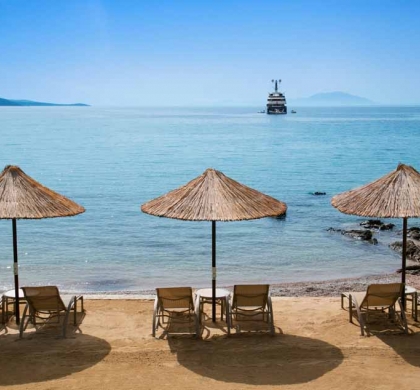
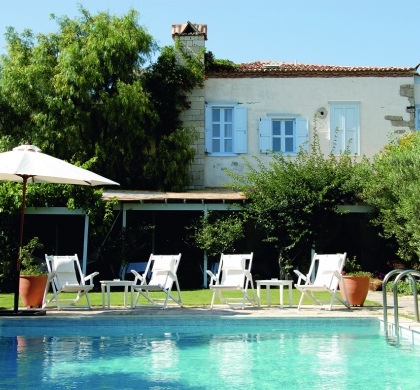
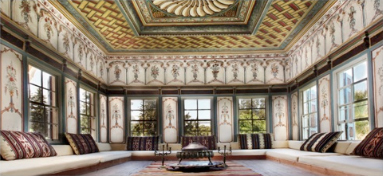
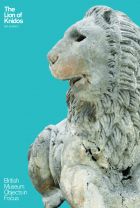
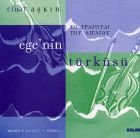
Cihat Aşkin, violin
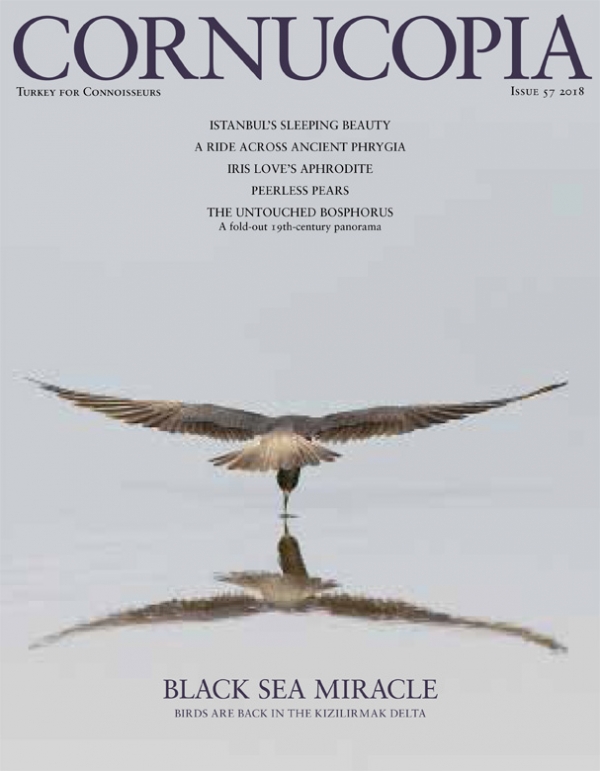

Cornucopia works in partnership with the digital publishing platform Exact Editions to offer individual and institutional subscribers unlimited access to a searchable archive of fascinating back issues and every newly published issue. The digital edition of Cornucopia is available cross-platform on web, iOS and Android and offers a comprehensive search function, allowing the title’s cultural content to be delved into at the touch of a button.
Digital Subscription: £18.99 / $18.99 (1 year)
Subscribe now